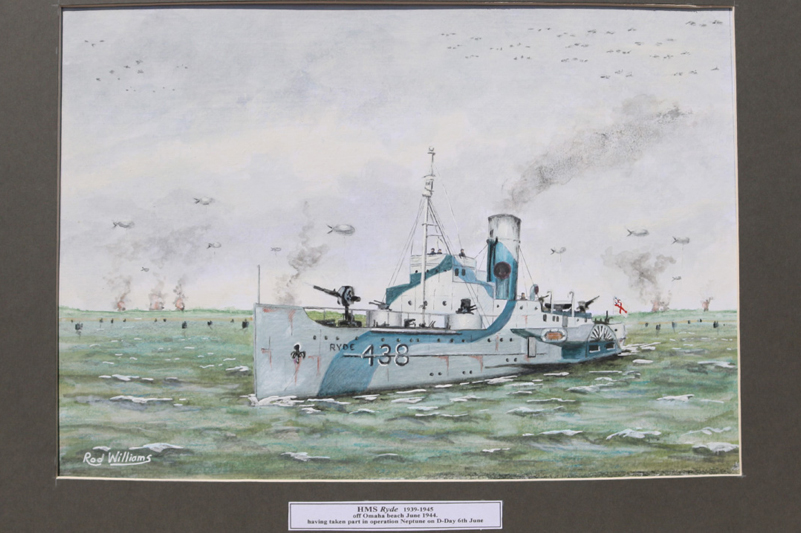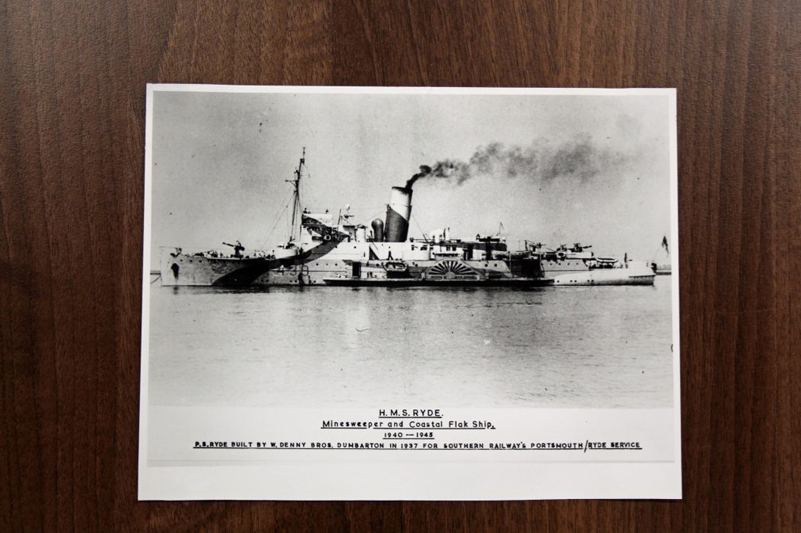
How the Isle of Wight ferries helped to win the war
This June marks the 75th anniversary of the D-Day Landings; the largest invasion ever assembled that landed 156,000 Allied troops by sea and air on five beachheads in Normandy, France. D-Day was the start of Allied operations which would ultimately liberate Western Europe, defeat Nazi Germany and end the Second World War.
HMS Ryde played an important role in the Normandy landings in 1944. The warship was sent to Omaha Beach shortly after D-Day to help protect its artificial Mulberry Harbour from enemy fire.
Yet only a few years earlier, HMS Ryde was taking tens of thousands of passengers to and from the Isle of Wight under her previous name Paddle Steamer (PS) Ryde!
Ships on the three cross-Solent routes, now operated by Wightlink – then by Southern Railway – certainly played their part in defeating the Nazis.

When war broke out, seven paddle steamers sailed between Portsmouth and Ryde Pier. Four of them were requisitioned by the government, converted to minesweepers and stationed on the East Coast of England and in the Thames estuary while another two played their part as civilian ships crewed by Royal Navy sailors.
The Isle of Wight car ferry Wootton saw action at Dunkirk. Despite usually sailing calmer waters between Portsmouth and Fishbourne, she crossed the Channel in 1940 to join the fleet of little boats that helped to rescue some 340,000 Allied troops from the beach while braving fierce Luftwaffe air attacks.
After Dunkirk, a German invasion looked imminent. In fact, military leaders even thought the Nazis might invade the Isle of Wight on their way to the mainland. The government took action – restricting travel to and from the Island by ordinary people and banning it completely in 1943.
The ferries-turned-warships were busy. In 1941, HMS Sandown became the target of 22 German dive-bombers but they failed to hit her despite dropping more than 100 bombs. The crew of HMS Southsea successfully shot down a German plane but the ship was badly damaged by a mine off the River Tyne a year later and was written off.
There was tragedy at home when PS Portsdown hit a mine near Spitbank Fort. Deckhand Sam Jupe had a lucky escape. Although he was thrown into the water by the blast, he swam back to the ship, climbed on board and helped rescue crew and passengers. A memorial service was held at Portsmouth Cathedral for the 23 people on board who lost their lives.
In August 1942, a lone German fighter plane machine-gunned the MV Lymington on her way to Yarmouth. Deckhand G. Sticklee rushed to man the Lewis gun installed on board, fired back and the pilot called off the attack. The rating was praised by the company for his bravery.
D-Day was instrumental in turning the tide and HMS Ryde was joined by HMS Sandown and HMS Whippingham on protection duties at the Mulberry Harbours.
As Allied troops fought across Europe towards Berlin, after D-Day, the threat from German raiders in Britain receded. Following the liberation of Paris on 25 August 1944, travel restrictions were lifted and people could again holiday on the Isle of Wight.
HMS Ryde, now PS Ryde once more, returned to serve the Isle of Wight in July 1945 and eventually retired from the fleet in 1969.
